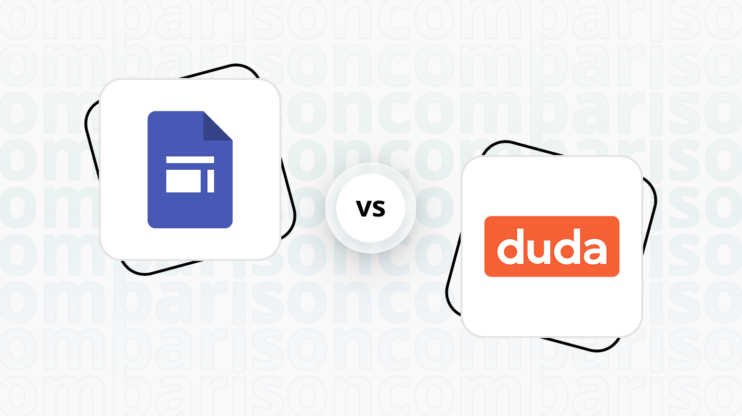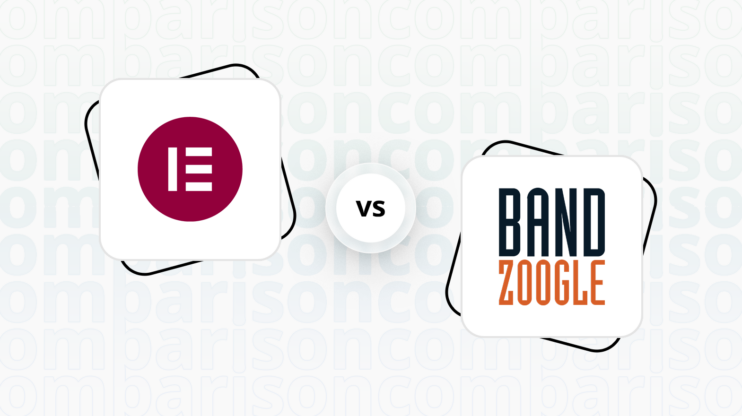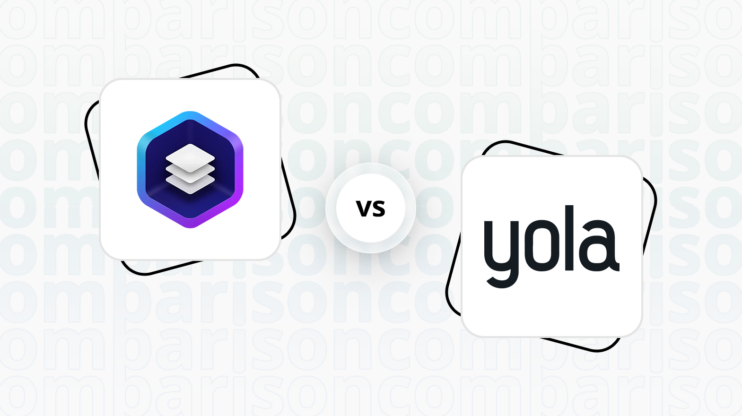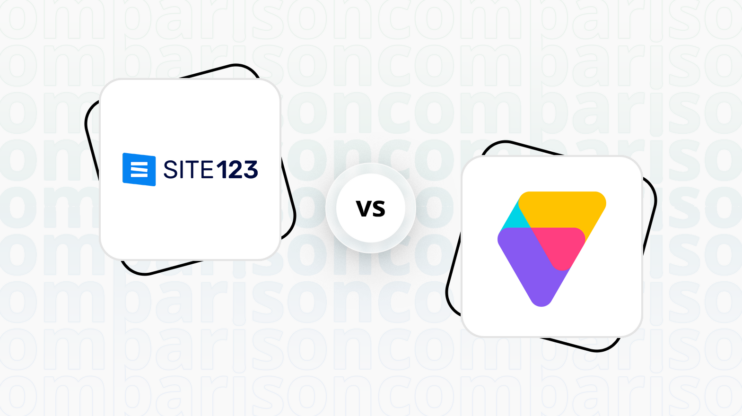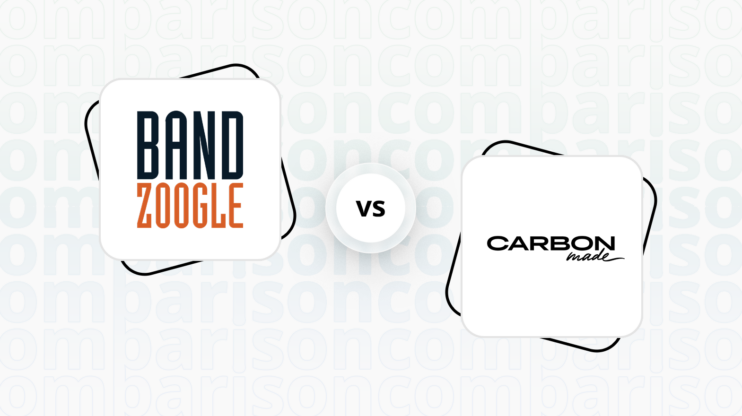Final verdict
Squarespace and Drupal cater to different user needs, each excelling in specific areas.
-
Squarespace (Overall Grade: 7.9/10)
is a user-friendly website builder and hosting platform, ideal for those seeking a hassle-free website creation experience. It offers a wide variety of pre-designed templates, an intuitive interface, and robust ecommerce features. Squarespace is perfect for users who prioritize ease of use, design flexibility, and integrated marketing tools. When comparing Squarespace vs Drupal, Squarespace stands out for its simplicity and comprehensive support. -
Drupal (Overall Grade: 6.4/10)
is an open-source CMS known for its flexibility and extensibility, making it suitable for complex websites with custom functionalities. It offers a vast array of modules and themes, allowing for extensive customization. Drupal is ideal for users who require advanced features and are comfortable with a steeper learning curve. In the Squarespace vs Drupal comparison, Drupal excels in providing a powerful platform for developers and businesses needing tailored solutions.

|

|
|
|---|---|---|
|
Design functionalities & templates |
8.0 |
7.8 |
|
Ease of use |
8.3 |
5.4 |
|
Ecommerce |
8.2 |
7.5 |
|
Website Editors |
8.3 |
7.5 |
|
Product testing options |
7.4 |
7.1 |
|
Price |
8.4 |
5.7 |
|
Hosting quality |
7.6 |
0 |
|
Website speed optimization |
6.7 |
6.4 |
|
Plugins and integrations |
6.8 |
8.6 |
|
Marketing features |
8.1 |
8.0 |
|
Customer support |
7.8 |
6.7 |
|
Security |
8.8 |
8.3 |
|
AI capabilities |
7.5 |
7.5 |
|
User Management |
7.4 |
9.1 |
Best for ecommerce
 8.2
8.2
 7.5
7.5
Verdict
: Squarespace is ideal for users seeking a straightforward, user-friendly ecommerce platform, while Drupal is better suited for those needing extensive customization and flexibility.
-
Squarespace
: Squarespace offers a user-friendly interface and a range of customizable templates, making it an excellent choice for businesses looking for a hassle-free ecommerce experience. It includes built-in marketing tools, secure payment processing, and SEO optimization, making it a robust option for small to medium-sized online stores. However, when comparing Squarespace vs Drupal, Squarespace may lack the advanced customization options that more complex ecommerce sites might require. -
Drupal
: Drupal, with its Drupal Commerce module, provides a highly flexible and extensible ecommerce solution. It is ideal for users who need complex pricing models, product variations, and are comfortable with a steeper learning curve. Drupal’s modular architecture allows for extensive customization, making it suitable for large-scale and complex ecommerce sites. However, it may be overwhelming for users looking for a more straightforward setup.
Best for informational & business websites
 8.4
8.4
 7.5
7.5
Verdict
: Squarespace is the preferred choice for creating informational and business websites due to its user-friendly interface and extensive design functionalities. Drupal, while powerful and flexible, is better suited for users with technical expertise who need a highly customizable platform.
-
Squarespace
: Squarespace excels in providing a seamless website creation experience with its intuitive drag-and-drop editor and a wide variety of pre-designed templates. It is ideal for users who want to create professional-looking websites without delving into coding. Squarespace’s hosting quality, ease of use, and customer support make it a strong contender for informational and business websites. With a score of 8.4, it stands out for its design functionalities and user-friendly approach. -
Drupal
: Drupal offers unparalleled flexibility and customization options, making it suitable for complex websites that require advanced functionalities. However, its steep learning curve and need for technical expertise can be a barrier for beginners. Drupal’s open-source nature allows for extensive module integration, but it requires more effort in terms of configuration and maintenance. With a score of 7.5, Drupal is a powerful choice for those who need a highly customizable platform and have the technical know-how to manage it.
Detailed comparison
Design functionalities & templates
Design FunctionalitiesRepresents how well each platform allows for creative design and customization of websites.Score Components:
- Template Variety (30%): Range and quality of design templates.
- Customization (30%): Flexibility and options for design alterations.
- User Interface (20%): Ease and intuitiveness of the design process.
- Responsiveness (10%): Adaptability to different devices and screen sizes.
- Innovation (10%): Unique design features and tools.
 8.0
8.0
 7.8
7.8
🏆
Winner: Squarespace.
Squarespace slightly edges out Drupal in terms of design functionalities and templates, offering a more user-friendly experience and a wider variety of pre-designed templates.
Squarespace boasts an impressive variety of website templates, offering over 120 pre-designed options to choose from. These templates cater to a wide range of needs and industries, from creative portfolios and sleek online stores to professional business websites and personal blogs.


On the other hand, Drupal, as a highly flexible and powerful content management system, offers a vast array of templates and designs to cater to virtually any website need. With thousands of themes available, users can choose from minimalist designs, industry-specific layouts, and highly customizable multipurpose themes.
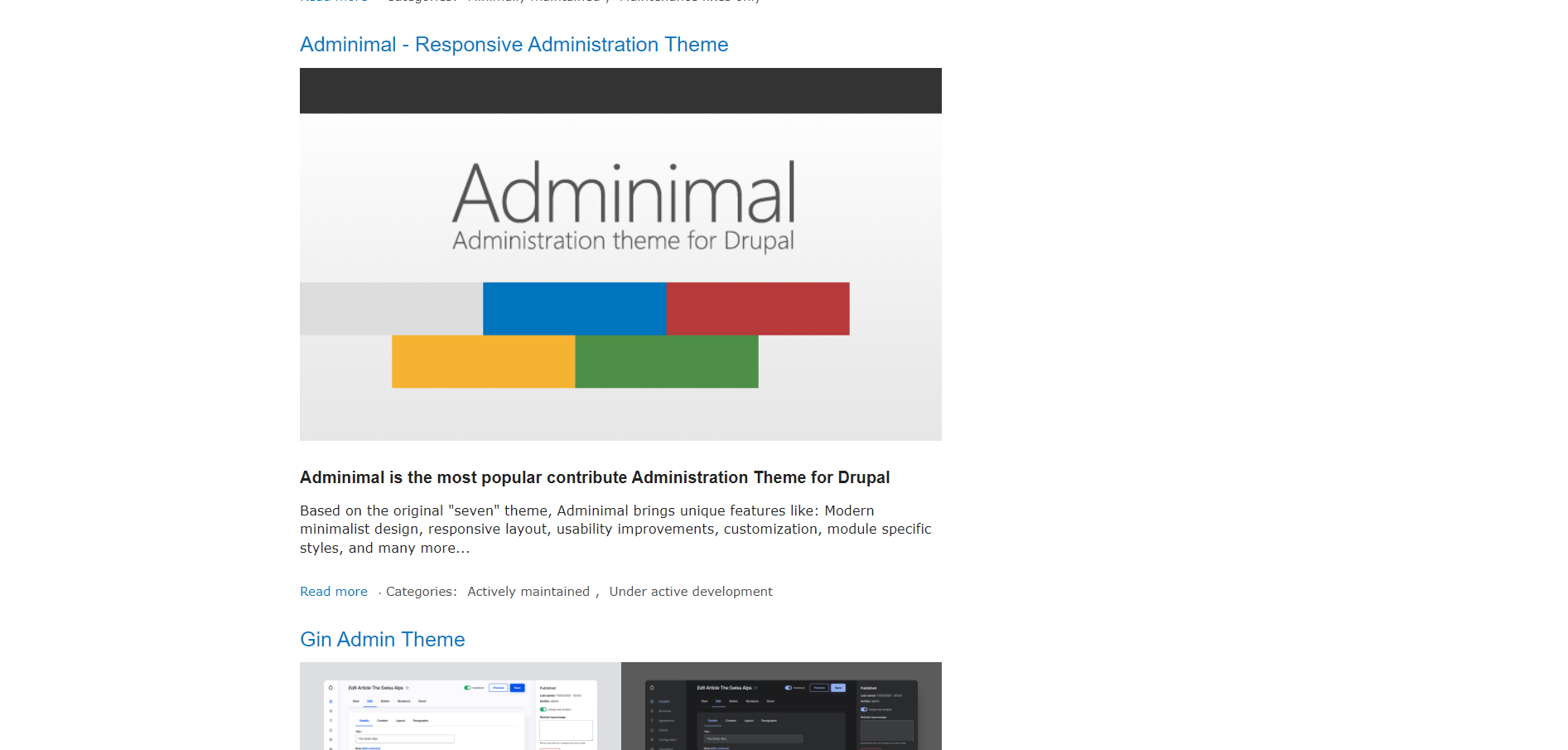
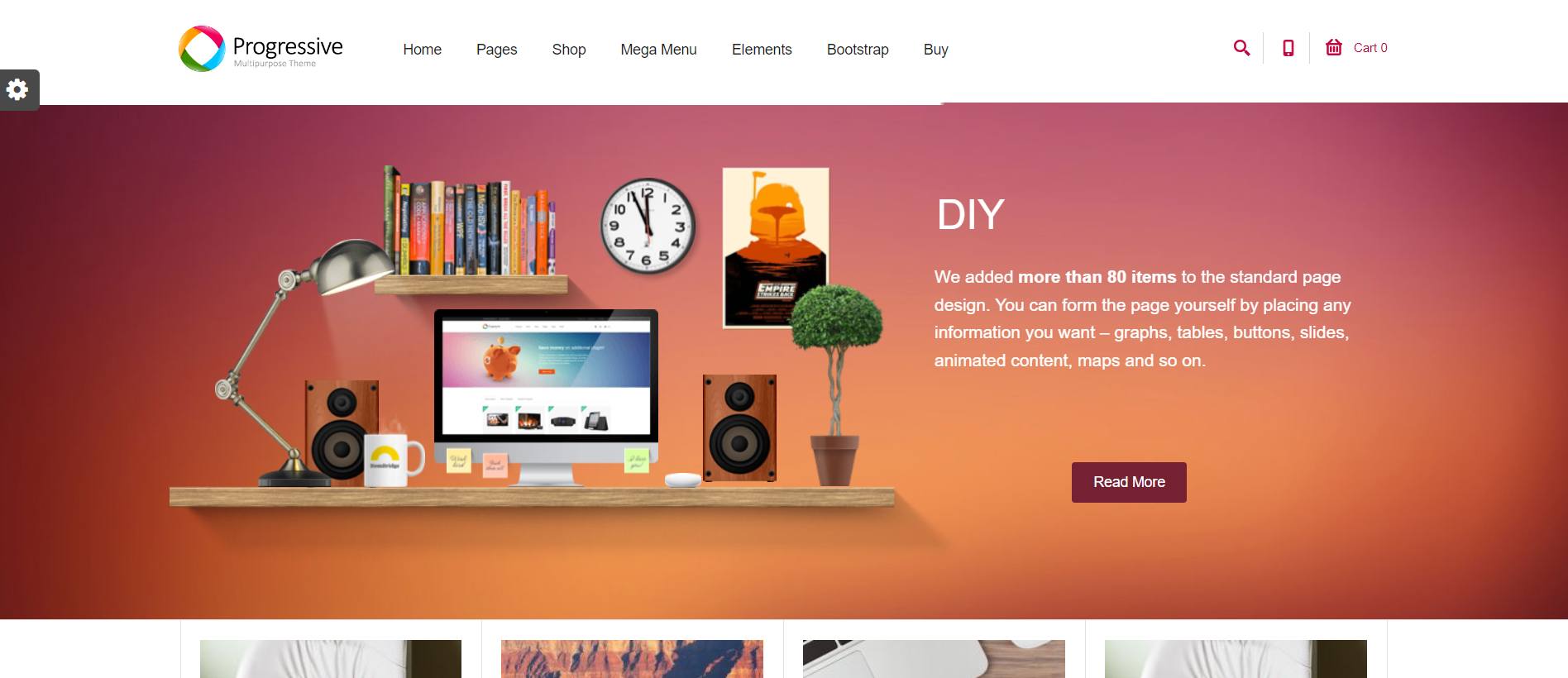
Get a head start on website creation with AI
Create a custom website tailored to your business needs 10X faster with 10Web AI Website Builder!
Ease of use
Ease of useReflects the platform’s overall user-friendliness.Score
Components:
- Learning curve (40%): Quickness and ease of getting started.
- Interface design (30%): Simplicity and intuitiveness of layout.
- User guidance (20%): Quality of tutorials and support.
- Flexibility (10%): Adaptability to various user skills.
 8.3
8.3
 5.4
5.4
🏆 Winner: Squarespace
. With a score of 8.3, Squarespace is known for its user-friendly interface and straightforward navigation, making it a top choice for a wide range of users. Drupal, scoring 5.4, offers a powerful and flexible platform but with a steeper learning curve, making it less suitable for beginners without technical support.
Learning Resources
🏆 Winner: Tie
. Both Squarespace and Drupal offer extensive learning resources and active user communities, making it easier for users to learn and adapt to the platforms.
For ecommerce
EcommerceMeasures the platform’s effectiveness in supporting online business activities.Score Components:
- Ecommerce themes and templates (20%): Variety and design of templates.
- Product management (25%): Ease of managing and organizing products.
- Payment options (25%): Variety and convenience of payment methods.
- Ecommerce features (20%): Features for managing an ecommerce store.
- Integration (10%): Compatibility with external e-commerce tools and services.
 8.2
8.2
 7.5
7.5
Squarespace and Drupal both offer robust ecommerce solutions, but they cater to different user needs. Squarespace is a user-friendly platform that simplifies online store setup with an intuitive interface and customizable templates. It’s ideal for businesses seeking a hassle-free ecommerce experience. On the other hand, Drupal, with its Drupal Commerce module, offers a flexible ecommerce solution that can be seamlessly integrated into its content management system. It’s suitable for users who require complex pricing models and product variations, and who are comfortable with a steeper learning curve.

|

|
|
|---|---|---|
|
Ecommerce themes and templates |
7.5 |
7.8 |
|
Product page customization |
7.0 |
8.3 |
|
Payment processing and commissions |
7.8 |
7.5 |
|
POS capabilities |
6.5 |
5.5 |
|
Payment gateways |
7.5 |
7.7 |
|
Product numbers |
6.8 |
7.0 |
|
Additional ecommerce features |
7.2 |
8.0 |
Squarespace ecommerce features:
- Intuitive interface
- Secure payment processing
- Built-in marketing tools
- SEO optimization
- Website analytics
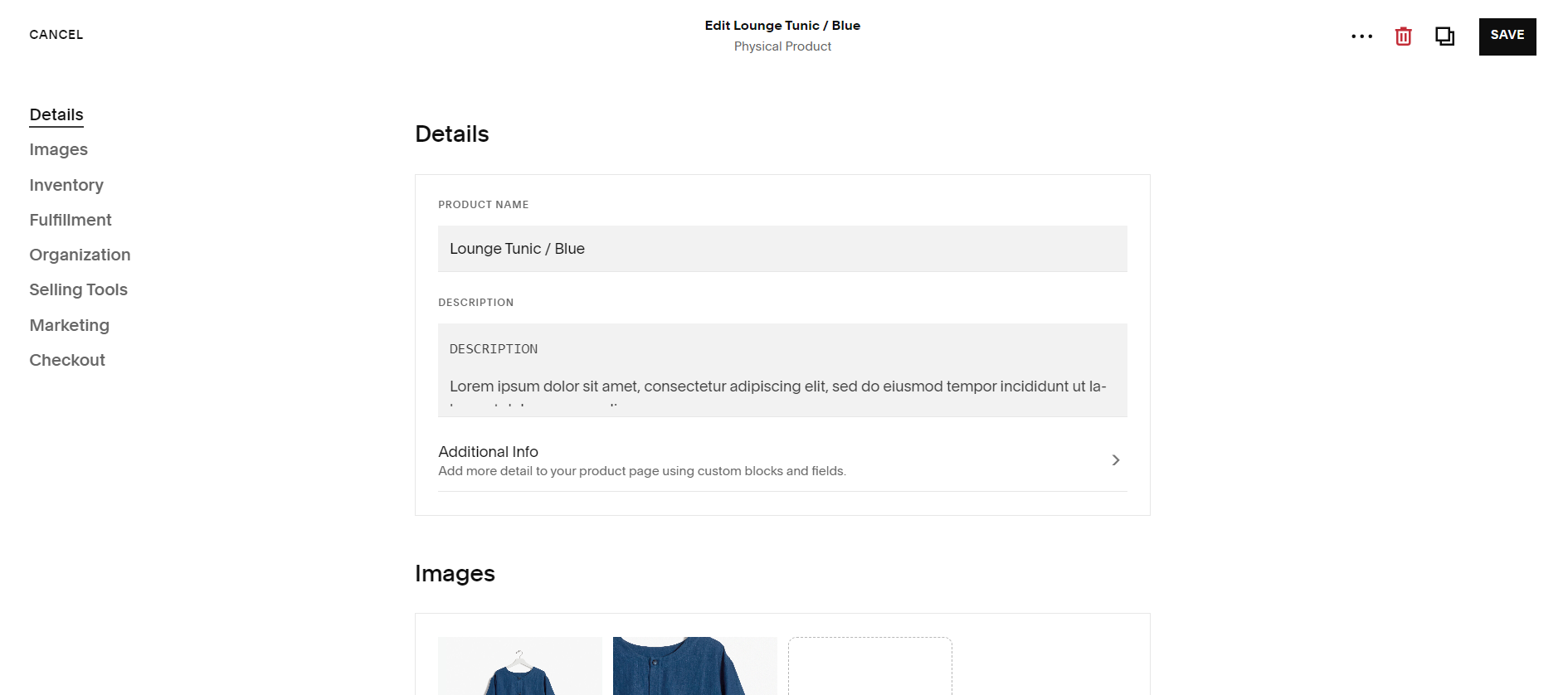
Drupal ecommerce features:
- Shopping Cart and Checkout Process
- Payment Gateway Integration
- Order Management and Invoicing
- Tax Calculation and VAT Support
- Shipping and Fulfillment
- Promotions and Discounts
- Reporting and Analytics
- Security and Compliance
Ecommerce themes & templates
Squarespace provides a diverse selection of around 50 ecommerce templates, catering to various industries like fashion, beauty, home goods, and technology. These templates range from clean and minimalist to bold and colorful, accommodating different brand aesthetics and product types. Offering unique layout elements such as product sliders and featured collections, these templates enhance visual interest and engagement.
Drupal offers a wide array of eCommerce themes designed to cater to different types of online stores, from clean and simple designs to more sophisticated and feature-rich options. These themes are built with responsiveness in mind, ensuring that stores function seamlessly across various devices. Themes like Fiora, DrupalMag, and Storefront highlight the diversity available, offering customization options to match the unique needs of each business.
Product page customization
Customizing Squarespace product pages offers options for layout, design, and interactive elements. Choose templates, customize colors, fonts, and content. Enhance engagement with features like customizable buttons, wishlists, comparisons, reviews, and related products. Advanced options include custom code injection and third-party app integrations. Limitations include fixed core page structure and the need for technical expertise. Free templates have fewer customization options than premium ones.
Drupal offers extensive customization possibilities for product pages through its modular architecture, allowing for detailed content types, flexible displays with Views, and theme customizations. The Drupal Commerce module enriches e-commerce functionalities, enabling tailored product management, checkout flows, and payment systems. With the ability to develop custom modules, Drupal provides range of possibilities to meet specific e-commerce needs.
Payment processing
Squarespace provides flexible payment processing for online stores with integrated gateways like Stripe and PayPal. External gateways can be set up for specific needs. Transaction fees may apply depending on the plan and payment method. Security measures include PCI compliance and fraud prevention. Additional features include payment links, support for subscriptions, and the ability to accept international payments in various currencies.
Drupal supports a wide range of payment gateways through third-party modules, including popular ones like PayPal, Stripe, and Authorize.Net. These modules enable seamless integration for e-commerce functionalities on Drupal sites. While Drupal itself does not charge any commissions or transaction fees, the individual payment gateways integrated with it do have their own fee structures, which typically include per-transaction charges and may also have monthly fees. The specific fees depend on the chosen payment gateway and the terms of service agreed upon by the website owner.
Website Editors
Website EditorsEvaluates the platforms’ website building and editing capabilities.Score Components:
- Customization tools (40%): Range and power of editing features.
- Editor usability (30%): User experience within the editor.
- Design flexibility (20%): Freedom in layout and design changes.
- Update and maintenance ease (10%): Simplicity of updating and maintaining the site.
 8.3
8.3
 7.5
7.5
🏆
Winner: Squarespace
. Squarespace, with a score of 8.3, offers a user-friendly editor that allows easy drag-and-drop website creation without coding. With visually appealing templates and customization options, it caters to beginners and pros alike. The real-time editing experience ensures instant previews. Prioritizing content, it’s mobile-responsive and offers functional features like forms, social media integration, and online stores. Squarespace seamlessly integrates with tools for extended capabilities.
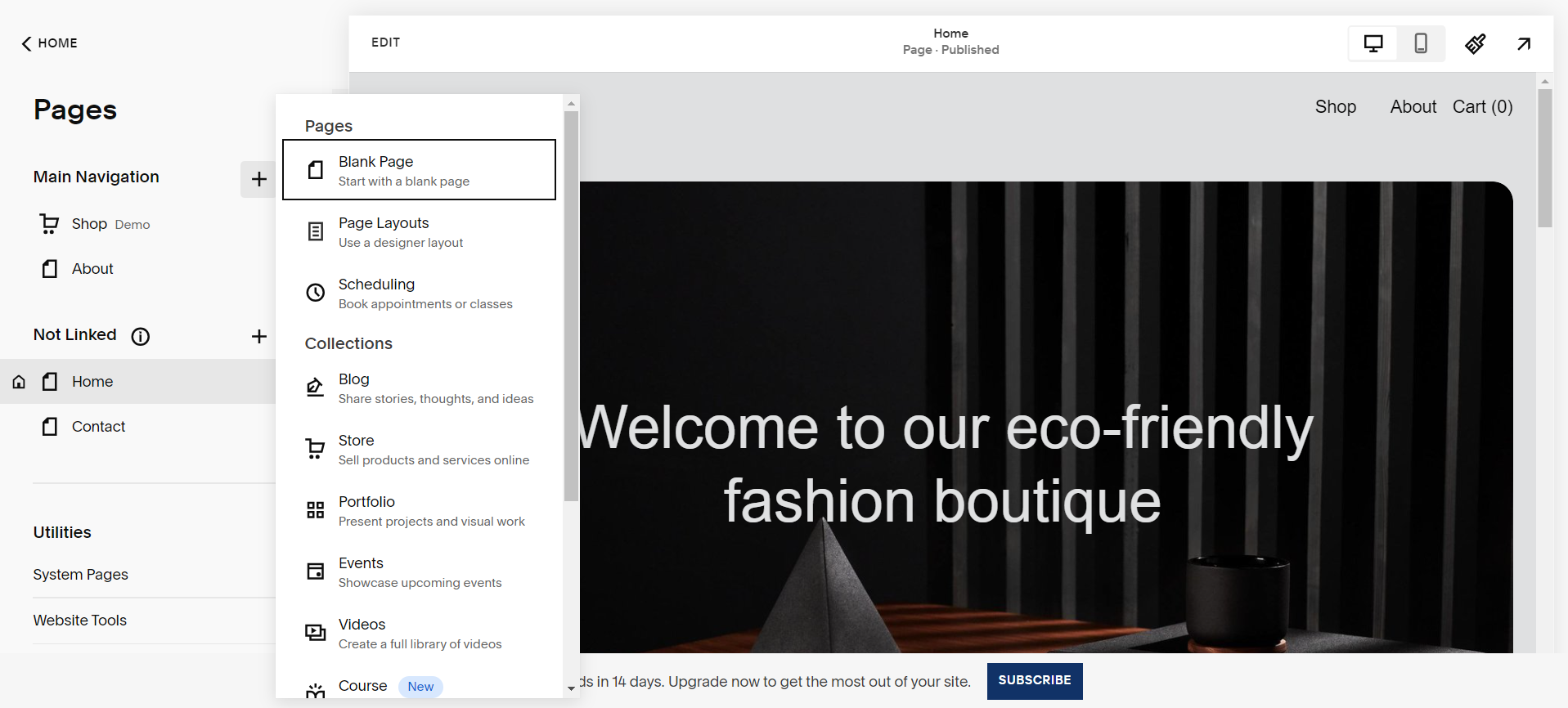
Drupal’s editor, scoring 7.5, offers a wide range of features tailored for content creation and management. It supports rich text editing, enabling users to format text, insert links, images, and media, as well as create tables and lists with ease. The editor is highly customizable, allowing administrators to configure toolbars and options according to the needs of their site. However, its steep learning curve can be a limitation for new users.
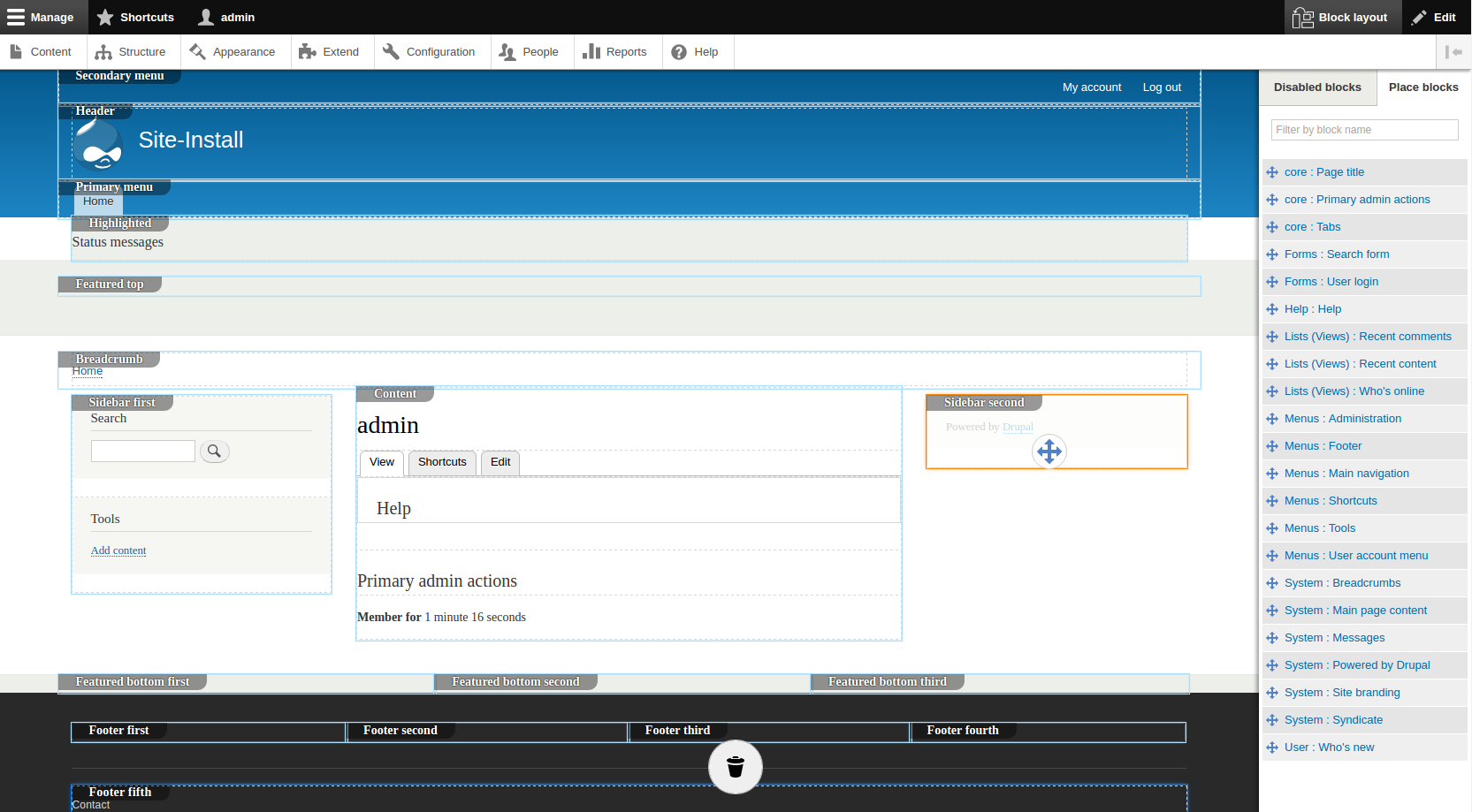
Mobile editor/app
 8.5
8.5
 0
0

🏆
Winner: Squarespace
. Squarespace offers a mobile app that allows users to manage their website on the go. The app includes features for content editing, website analytics, online store management, and social media scheduling. However, for more complex tasks such as advanced design customization or creating new page layouts, users will need to access the desktop editor.
On the other hand, Drupal does not have a dedicated mobile editor app. While Drupal is a powerful and flexible platform for building and managing complex websites, its lack of a mobile editor puts it at a disadvantage in this comparison. Therefore, Squarespace is the clear winner in terms of mobile editing capabilities.
Product testing options
Product Testing OptionsAssesses the options for trying out platform features before commitment.Score Components:
- Trial quality (40%): Extent and usefulness of the trial or free version.
- Feature accessibility (30%): How many features are available to test.
- Trial duration (20%): Length of the trial period.
- Ease of transition (10%): Smoothness of moving from trial to paid plans.
 7.4
7.4
 7.1
7.1
Overall Result
:
Squarespace wins
. Squarespace scores 7.4, slightly higher than Drupal’s 7.1. Squarespace offers a 14-day free trial, allowing users to test most of its premium features, except for custom code, premium integrations, and removal of Squarespace branding. On the other hand, Drupal, being an open-source CMS, offers a free version but does not provide a trial version or the possibility to test premium features.

|

|
|
|---|---|---|
|
Free Plan |
No (14-day free trial) |
Yes (Open-source software) |
|
Trial Duration |
14 days | No trial version |
|
Testing Premium Features |
Most features, with exceptions | No |
Price
PriceLooks at the cost-effectiveness and value for money of each platform.Score Components:
- Plan value (40%): What each pricing tier offers.
- Transparency and clarity (30%): Clearness of pricing structures.
- Flexibility of plans (20%): Range of options to suit different budgets.
- Hidden costs (10%): Additional expenses not included in the plan.
 8.4
8.4
 5.7
5.7
Squarespace offers a range of subscription plans, while Drupal is free but requires separate purchases for domain, hosting, and website builder subscriptions.

|

|
|
|---|---|---|
|
$10-$15 |
Personal ($12/month): Build a basic website with limited features for personal use. Access to basic templates, mobile-friendly design, and some social media integrations. Value for price: 6.0 |
No offering at this amount. |
|
$15-$20 |
Business ($16/month): Upgrade features with custom domain, SEO tools, marketing tools like email campaigns, and analytics. Value for price: 7.5 |
No offering at this amount. |
|
$20-$30 |
Commerce ($26/month): Perfect for online stores with built-in eCommerce functionality (unlimited products), secure checkout, inventory management, and marketing tools. Value for price: 8.5 |
No offering at this amount. |
|
$40+ |
Advanced Commerce ($40/month): Cater to high-volume stores with advanced eCommerce features like abandoned cart recovery, product subscriptions, gift cards, and real-time shipping quotes. Value for Price: 9.0 |
No offering at this amount. |
location. As a result in rare cases the prices displayed here can differ from the ones you see on their
websites.
Hosting quality
Hosting
qualityExamines the reliability and performance of the hosting solutions.Score Components:
- Uptime (40%): Consistency and reliability of website availability.
- Speed (30%): Loading times and performance.
- Bandwidth and storage (20%): Sufficiency of resources provided.
- Data centers (10%): Quality and distribution of hosting infrastructure.
 7.6
7.6
 0
0
Winner: Squarespace
. Squarespace offers proprietary cloud-based hosting included in all their plans, with a 99.9% uptime guarantee and data centers across North America, Europe, and Asia. On the other hand, Drupal, an open-source CMS, does not directly provide hosting services. The type of hosting, uptime, and data centers for websites built with Drupal depend on the chosen hosting provider.

|

|
|
|---|---|---|
|
Do they offer hosting? |
Yes, included in all paid plans |
No, Drupal itself does not directly provide hosting services. |
|
Data Centers: |
Squarespace’s data centers are strategically scattered across North America, Europe, and Asia |
Data centers depend on hosting providers |
|
Type of hosting: |
Proprietary cloud-based hosting |
Drupal itself isn’t a hosting platform, there are various options when choosing the type of hosting for websites built with Drupal, such as: Shared Hosting, VPS Hosting, Dedicated Server Hosting, Cloud Hosting |
|
Uptime: |
99.9% |
Uptime & uptime guarantee depends on hosting provider |
|
Uptime Guarantee: |
Yes |
Depends on hosting provider |
Website Speed Optimization
Website Speed OptimizationEvaluates optimization of website loading timesScore Components:
- PageSpeed Score (30%): Google’s score indicating performance optimization.
- Loading Time (30%): The average time until a website is fully interactive.
- Mobile Optimization (15%): Optimization effectiveness for mobile devices.
- Resource Optimization (15%): Optimizing images, scripts, and other heavy resources.
- CDN Usage (10%): Use of CDN to enhance speed across geolocations.
 6.7
6.7
 6.4
6.4
🏆 Winner: Squarespace
Both Squarespace and Drupal place a high priority on website performance and page speed, with Squarespace focusing on responsive design, image optimization, CDN, code minification, and lazy loading of images, and Drupal offering numerous guides and tutorials on speed optimization. However, Squarespace gets a slight edge when it comes to website speed optimization.

|

|
|
|---|---|---|
|
Focus |
Responsive design, image optimization |
User-guided optimization |
|
Performance Tools |
CDN, code minification, lazy loading |
User-guided optimization |
|
Key Strategies |
Responsive design, image optimization, CDN, code minification, lazy loading of images |
Drupal offers numerous guides and tutorials on speed optimization |
|
Load Times |
0.7s to 9.1 s (Average: 2.9s) |
Varies depending on optimization and website complexity |
|
Page Speed Scores Range |
20/100 to 93/100 (Average: 62.7/100) |
Varies depending on optimization and website complexity |
|
Core Web Vitals Improvement |
Emphasis on LCP, FID, CLS improvements |
Depends on users |
Squarespace has a strong focus on website performance and page speed, integrating tools like responsive design, image optimization, CDN, code minification, and lazy loading of images. Real-world performance analysis of Squarespace websites showed a wide range of page speed scores from 20/100 to 93/100, averaging 62.7/100, with the load times ranging from 0.7 seconds to 9.1 seconds, with an average of 2.9 seconds.
Drupal, on the other hand, offers numerous guides and tutorials on speed optimization, allowing users to optimize almost all aspects of their website. However, the load times and PageSpeed scores vary depending on the optimization and website complexity. The Core Web Vitals improvements also depend on the users.
Get a head start on website creation with AI
Create a custom website tailored to your business needs 10X faster with 10Web AI Website Builder!
Plugins and integrations
Plugins and integrationsMeasures the range and effectiveness of additional plugins and integrations.Score Components:
- Variety of options (40%): Range of available add-ons.
- Integration smoothness (30%): Ease of integrating plugins into the site.
- Quality of plugins (20%): Functionality and reliability of the options.
- Custom integration capabilities (10%): Support for custom or third-party integrations.
 6.8
6.8
 8.6
8.6
🏆 Winner: Drupal.
With a score of 8.6, Drupal leads the way with its extensive range of modules and seamless integrations. It’s a powerhouse for adding functionalities that scale with your business. Squarespace, with a decent 6.8, offers a variety of plugins too, but Drupal’s breadth and depth, especially for complex websites, give it the upper hand.
It is however worth mentioning that there are more free modules available for Drupal compared to Squarespace.
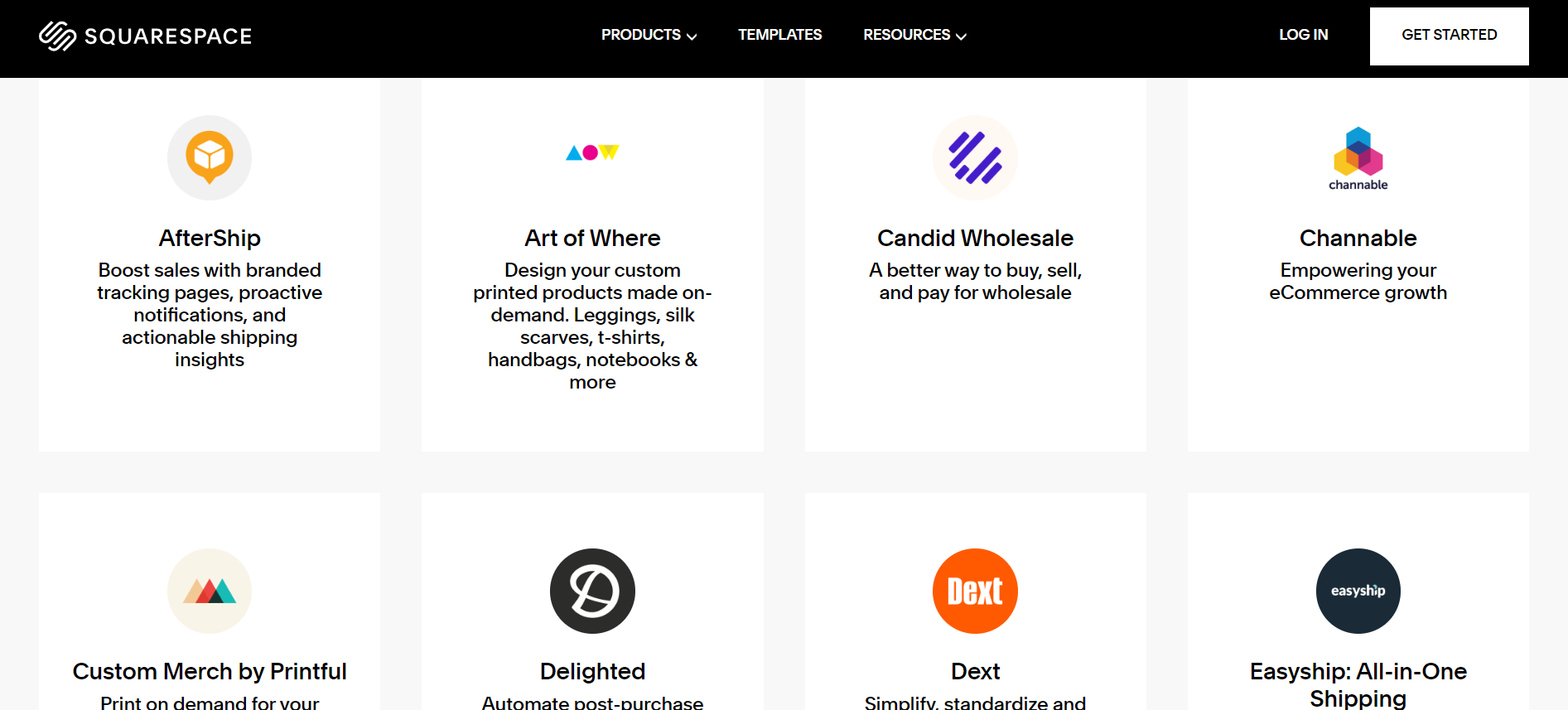
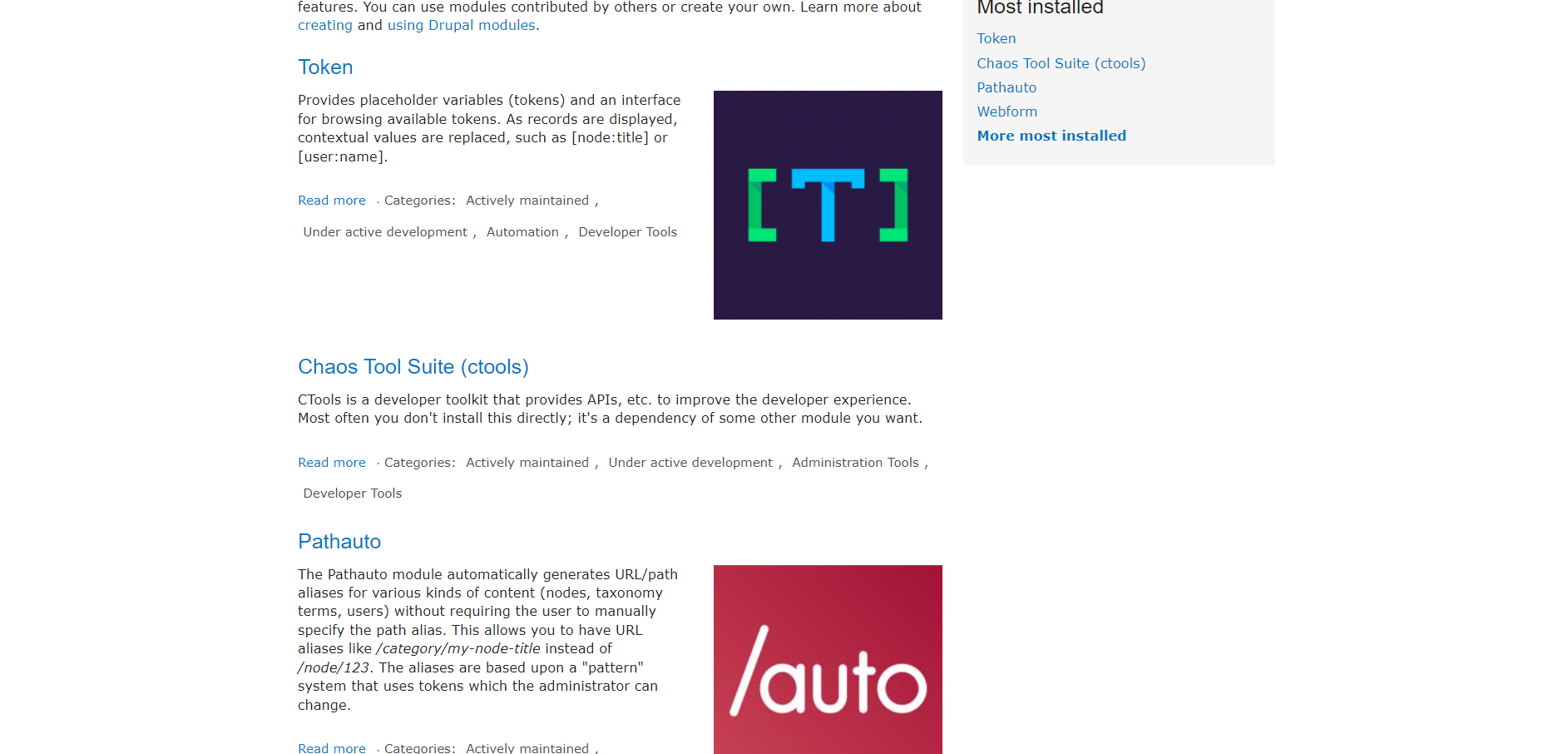
Marketing Features
Design FunctionalitiesRepresents how well each platform allows for creative design and customization of websites.Score Components:
- Template Variety (30%): Range and quality of design templates.
- Customization (30%): Flexibility and options for design alterations.
- User Interface (20%): Ease and intuitiveness of the design process.
- Responsiveness (10%): Adaptability to different devices and screen sizes.
- Innovation (10%): Unique design features and tools.
 8.1
8.1
 8.0
8.0
🏆
Overall Winner: Squarespace
. Squarespace edges out Drupal with its user-friendly interface and built-in marketing features. Drupal, while flexible and extensible, requires third-party extensions for some marketing features.

|

|
|
|---|---|---|
|
SEO Tools |
|
Yes (with SEO modules such as Yoast SEO) |
|
Email Marketing |
|
Yes (with third-party extensions, such as MailChimp) |
|
Blogging |
|
|
|
Social Media Integration |
Direct linking and selling on social platforms, plus feed displays on-site |
Yes |
|
Analytics and Reporting |
Detailed insights into website performance and visitor behavior |
Yes (basic built-in features, and Google Analytics integrations through modules) |
|
Ads and Promotions |
Integration with Google Ads and tools for managing sophisticated ad campaigns |
Yes (but with third-party extensions) |
Customer Support
Customer supportEvaluates the quality and availability of support options.Score Components:
- Response time (40%): Speed of support responses.
- Support quality (30%): Effectiveness and helpfulness of the support.
- Availability (20%): Range of support channels (phone, chat, email).
- Resource richness (10%): Quality of self-help and educational materials.
 7.8
7.8
 6.7
6.7
🏆 Winner: Squarespace
. Comparing Squarespace vs Drupal, Squarespace takes the lead with its more accessible and varied customer support options. Squarespace offers live chat, email, and phone support, with email support available 24/7. Additionally, the community forum and help center provide round-the-clock assistance, making it easier for users to find solutions to their problems at any time.
Drupal, on the other hand, relies heavily on its community support system through Drupal.org, which includes forums and extensive documentation. While professional 24/7 support services are available through third-party providers like Drupal Connect and GreenGeeks, these often come with additional costs. Despite its flexibility and extensibility, Drupal’s support system may not be as immediately accessible or user-friendly as Squarespace’s, particularly for non-developers.
Security
SecurityLooks at the platforms’ security measures and data protection.Score Components:
- Data protection (40%): Safeguards for user and customer data.
- SSL and encryption (30%): Implementation of secure connections.
- Compliance (20%): Adherence to industry security standards.
- Regular updates (10%): Frequency of security updates and patches.
 8.8
8.8
 8.3
8.3
🏆
Winner: Squarespace
. Squarespace takes a comprehensive approach to security, offering secure server storage, encryption, strict access controls, and compliance with regulations such as GDPR and CCPA. It also provides vulnerability scanning and malware detection to further safeguard your website content and customer information.
Drupal, on the other hand, offers a robust and flexible security system, but it requires more configuration and management from the user’s side. It provides built-in mechanisms for preventing common web vulnerabilities and supports advanced security features like two-factor authentication. However, the security of a Drupal site largely depends on how well it is configured and maintained by the user.
AI Capabilities
AI capabilitiesMeasures the effectiveness of AI-driven features and tools.Score Components:
- Automation efficiency (40%): Impact of AI on streamlining processes.
- Personalization (30%): AI-driven customization for users or customers.
- AI-Assisted design (20%): Role of AI in website design and functionality.
- Data analysis (10%): Use of AI in interpreting user data and analytics.
 7.5
7.5
 7.5
7.5

|

|
|
|---|---|---|
|
AI Builder |
Partial AI assistance in website creation |
|
|
AI Ecommerce Features |
AI-powered copywriting, SEO optimization, and email marketing |
AI-enhanced chatbots, content creation, and marketing automation |
|
AI Content Generation |
AI-generated website copy, blog posts, and social media captions |
AI-integrated content generation and SEO optimization |
|
Additional AI Features |
SEO optimization, product recommendations, and inventory management insights |
AI-based search enhancements, content personalization, and automated content moderation |
🏆 Winner: Squarespace
. Squarespace and Drupal both scored 7.5 for their AI capabilities. However, Squarespace’s AI features are more user-friendly and comprehensive, offering AI assistance in website creation, AI-powered ecommerce features, and AI-generated content. Drupal, while offering AI-enhanced features, does not have a dedicated AI builder.

User Management
User ManagementAssesses the platforms’ capabilities in managing user roles, permissions, and accessibility.Score Components:
- Role Customization (40%): Flexibility in creating and defining user roles and
permissions. - Ease of Management (30%): User interface and tools for managing users.
- Access Control (20%): Effectiveness of access control measures for different user
levels. - Scalability (10%): Ability to manage a growing number of users efficiently.
 7.4
7.4
 9.1
9.1
🏆 Winner: Drupal
. Both Squarespace and Drupal offer different user roles with varying access levels, but Drupal’s flexibility and unlimited user capacity give it an edge.
- Squarespace’s user capacity varies by plan, with the Personal Plan allowing one owner, Business and Commerce Plans permitting 2 collaborators, and the Enterprise Plan offering unlimited users.
- Drupal allows an unlimited number of users to manage and edit a website, only constrained by server capacity and practical management considerations.
Squarespace User Roles and Access Levels:
| Role | Description | Access Highlights |
|---|---|---|
| Owner | The primary user who created the website and has full access. | Full site access, including billing, site settings, content editing, and member management. |
| Administrator | Users granted nearly full access to manage the site alongside the Owner. | Access to most areas except for some owner-specific settings like ownership transfer. |
| Content Editor | Users focused on adding and managing site content without full site access. | Can add, edit, and delete content on pages, blog posts, and manage comments. |
| Billing | Users who manage the subscription and billing details. | Access to billing information and the ability to update subscription details. |
| Store Manager | Users who manage the ecommerce aspects of the site. | Can manage inventory, fulfill orders, manage customers, and view sales analytics. |
| Custom | A role defined by the site owner or administrators with specific access. | Customizable access as defined by the Owner or Administrators, can vary widely between sites. |
Drupal User Roles and Access Levels:
| Role | Description | Access Highlights |
|---|---|---|
| Editor | Users responsible for content creation, editing, and publishing. | Can create, edit, delete, and publish content; can also manage comments. |
| Moderator | Users focused on site moderation, including comment and user management. | Can approve or delete comments, block users, and manage reported content. |
| Administrator | Users with full access to all administrative features of the site. | Can change site configuration, manage all content, users, permissions, and install modules/themes. |
Additional Features

|

|
|
|---|---|---|
|
SSL Certificate |
|
|
|
Custom Domain |
|
|
|
Free Custom Domain Included |
|
|
|
International Domains |
|
|
|
Mobile Responsive |
|
|
|
Page Speed |
|
|
|
Website Builder Mobile App |
|
|
|
Convert a Website To An App |
|
|
|
Website Analytics |
|
|
|
Multilingual Sites |
|
|
|
Multiple Users |
|
|
User Feedback
Squarespace is well-liked for its easy-to-use interface and versatile tools, making it ideal for those who aren’t tech-savvy. It offers various features like website creation, SEO, online selling, and more, catering to different users. Customers appreciate its good customer support and visually appealing templates, creating a professional online presence. However, some users find issues with domain transfer/setup, limited customization options, and consider the pricing slightly higher. There are also occasional concerns about customer service and technical limitations like template rigidity and missing features.
Users appreciate Drupal for its ease of use, security, and flexibility as an open-source CMS, highlighting its ability to scale and support a variety of websites and applications with modern technology tools. The community and documentation are frequently mentioned positives, providing ample support and resources. However, criticisms include a relative lack of plugins and themes compared to competitors like WordPress, the learning curve for customization without coding, and some challenges with installation and updates. The platform is praised for its robust content management capabilities, enabling users to manage content and user access efficiently. Overall, feedback underscores Drupal’s strength in creating secure, customizable, and scalable web solutions, despite some desires for more intuitive UI and easier setup.
The making of this blog
We followed a clear, step-by-step process to write and research this article.
FAQ
Which platform is easier to use for beginners, Squarespace or Drupal?
Can I build an ecommerce website with both Squarespace and Drupal?
How do Squarespace and Drupal compare in terms of design and templates?
Which platform offers better customer support, Squarespace or Drupal?
Is Drupal more flexible than Squarespace?
Which platform is better for SEO, Squarespace or Drupal?
How do hosting and website speed optimization compare between Squarespace and Drupal?
Can I manage a website on Squarespace and Drupal without coding knowledge?










